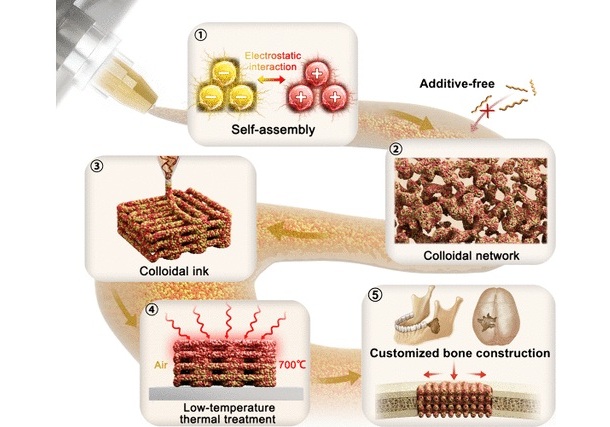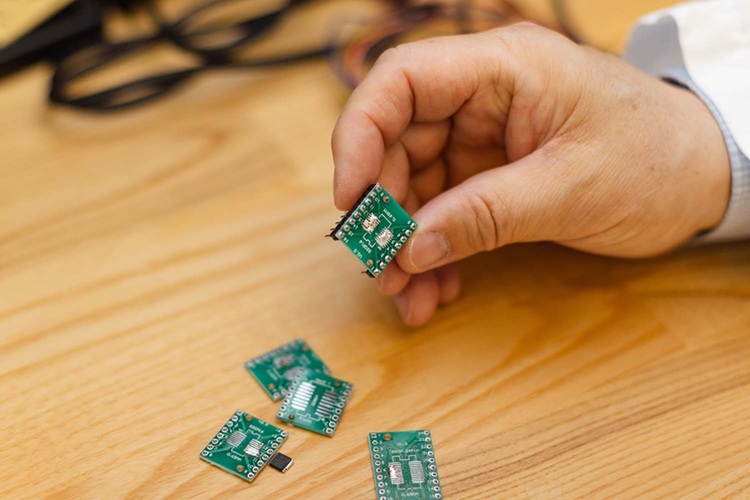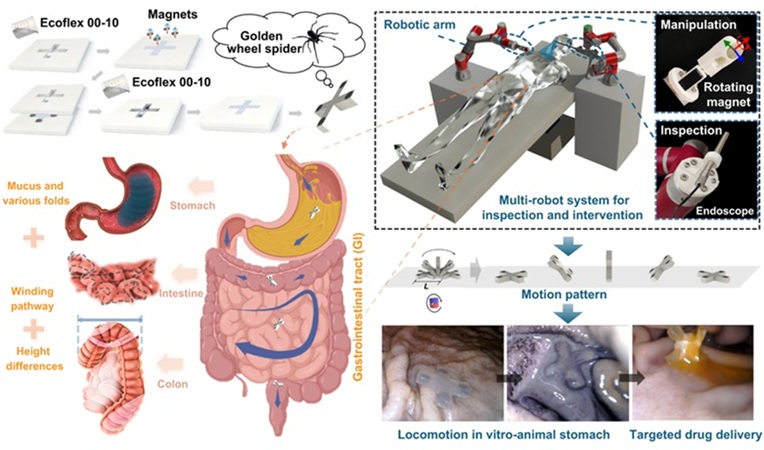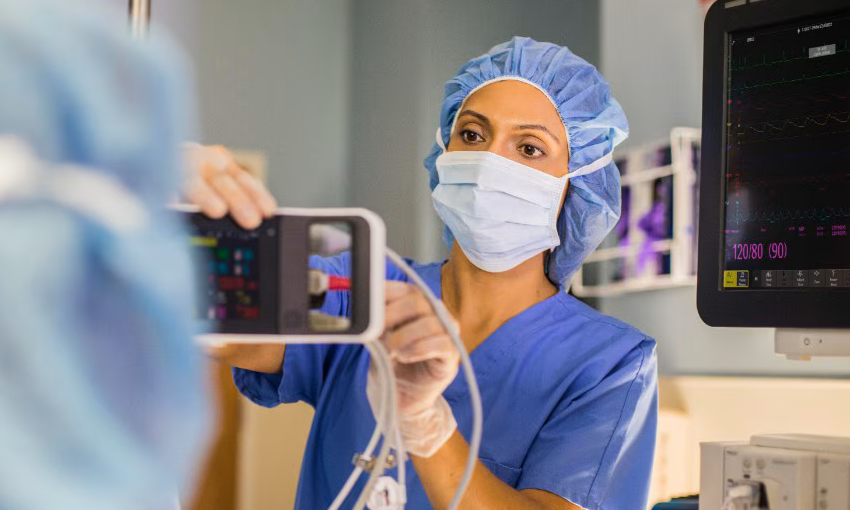Medical Thawing Device Delivers Plasma on Demand
|
By HospiMedica International staff writers Posted on 14 Jan 2020 |

Image: The ZipThaw device thaws plasma rapidly and safely (Photo courtesy of FreMon Scientific)
A portable rapid warming device thaws fresh frozen plasma (FFP) and plasma frozen within 24 hours after phlebotomy (FP24) for clinical use.
The FreMon Scientific (La Jolla, CA, USA) ZipThaw device is a lightweight (eight kilograms), compact precision plasma thawing system that is designed to rapidly thaw FFP and FP24 at the point of care, be it the operating room, procedure room, at the bedside, or in a trauma location. The device plugs into a standard outlet and has two chambers which work independently. Fear of cross contamination is minimized via the leakproof ZipSleeve, a disposable, durable, blood product sleeve that eliminates concerns of bursting bags, and also contains a warming technology that enables consistent temperature of the final product.
Features include dry electronic circuits, with no water immersion needed; preservation of coagulation factors needed for transfusion; a touch screen with a user friendly interface; the device is maintenance free, eliminating the risk of rupture and cross contamination; blood products temperature is consistently monitored, with no recalibration needed; continuous data capture and report of the full thawing cycle is provided; an integrated barcode reader promotes freezer-to-vein tracking; whisper quiet operation; and a three-year full replacement warranty.
“ZipThaw delivers plasma to patients requiring transfusions, and with ZipSleeve's patented sensors, the system gives accurate, degree-by-degree measurement of the specimen's actual temperature during the thawing process, not its surroundings,” said Farideh Bischoff, MD, CEO of FreMon Scientific. “FreMon Scientific has designed the next generation thawing device. Today marks a new era in plasma thawing for patients, clinicians, and researchers seeking a more effective approach that is efficient, reproducible, and safe.”
Blood plasma is a yellowish-colored liquid component of blood in which blood cells are suspended, making it the “extracellular matrix” of blood cells. Along with platelets, plasma serves an important function and thanks to clotting factors, helps repair damage to blood vessels and stanching bleeding. FFP can be kept at -25°C or lower for up to three years, and can be used for five days after thawing. Civilian and military clinical practice guidelines call for early transfusion of plasma in cases of severe trauma and hemorrhagic shock so as to achieve a plasma-to-red-blood-cell ratio of 1:1 to 1:2.
Related Links:
FreMon Scientific
The FreMon Scientific (La Jolla, CA, USA) ZipThaw device is a lightweight (eight kilograms), compact precision plasma thawing system that is designed to rapidly thaw FFP and FP24 at the point of care, be it the operating room, procedure room, at the bedside, or in a trauma location. The device plugs into a standard outlet and has two chambers which work independently. Fear of cross contamination is minimized via the leakproof ZipSleeve, a disposable, durable, blood product sleeve that eliminates concerns of bursting bags, and also contains a warming technology that enables consistent temperature of the final product.
Features include dry electronic circuits, with no water immersion needed; preservation of coagulation factors needed for transfusion; a touch screen with a user friendly interface; the device is maintenance free, eliminating the risk of rupture and cross contamination; blood products temperature is consistently monitored, with no recalibration needed; continuous data capture and report of the full thawing cycle is provided; an integrated barcode reader promotes freezer-to-vein tracking; whisper quiet operation; and a three-year full replacement warranty.
“ZipThaw delivers plasma to patients requiring transfusions, and with ZipSleeve's patented sensors, the system gives accurate, degree-by-degree measurement of the specimen's actual temperature during the thawing process, not its surroundings,” said Farideh Bischoff, MD, CEO of FreMon Scientific. “FreMon Scientific has designed the next generation thawing device. Today marks a new era in plasma thawing for patients, clinicians, and researchers seeking a more effective approach that is efficient, reproducible, and safe.”
Blood plasma is a yellowish-colored liquid component of blood in which blood cells are suspended, making it the “extracellular matrix” of blood cells. Along with platelets, plasma serves an important function and thanks to clotting factors, helps repair damage to blood vessels and stanching bleeding. FFP can be kept at -25°C or lower for up to three years, and can be used for five days after thawing. Civilian and military clinical practice guidelines call for early transfusion of plasma in cases of severe trauma and hemorrhagic shock so as to achieve a plasma-to-red-blood-cell ratio of 1:1 to 1:2.
Related Links:
FreMon Scientific
Latest Critical Care News
- Virus Cocktail to Combat Superbugs Offers New Precision Medicine Approach for Hospitals Battling AMR
- Smart Biosensors Could Be Game-Changer for Wearable Health Tech
- Brainwave Test Detects Memory Decline Years Before Alzheimer’s Diagnosis
- Low-Cost Medical Device Stops Postpartum Hemorrhages
- Non-Invasive Wearable Sensor Detects Sweat Biomarker in Low-Perspiration Conditions
- New Autoinjector Could Transform Trauma Care in Severe Bleeding Emergencies
- Portable Light-Based Brain Monitor Improves Dementia Diagnosis
- New Ultrasound Technique Enables Safer Vein Access in Critically Ill Patient
- CVD Risk Prediction Tool Could Guide Statin Therapy
- Wearables Could Revolutionize Pregnancy Monitoring and Detect Abnormalities
- AI Model Identifies AF Patients Requiring Blood Thinners to Prevent Stroke
- Soft Robot Intubation Device Could Save Lives
- Bee-Sting Inspired Wearable Microneedles to Revolutionize Drug Delivery
- Wearable Smart Patch Runs Tests Using Sweat Instead of Blood
- AI Improves Prediction of CKD Progression to End Stage Renal Disease
- First-Of-Its-Kind Online Tool to Revolutionize Treatment of High Blood Pressure
Channels
Surgical Techniques
view channel
3D Printable Bio-Active Glass Could Serve as Bone Replacement Material
Glass may not seem like a natural choice for replacing bone, yet the two materials share surprising similarities in structure and strength. Bone and glass both bear weight more effectively than they withstand... Read more
Micro Imaging Device Paired with Endoscope Spots Cancers at Earlier Stage
Digestive system cancers are among the most common cancers, with hundreds of thousands of new cases and deaths reported annually in the United States. Standard endoscopy, the main diagnostic method for... Read more
Spider-Inspired Magnetic Soft Robots to Perform Minimally Invasive GI Tract Procedures
The gastrointestinal (GI) tract is vital for digestion, nutrient absorption, and waste elimination, but it is also prone to cancers and other serious conditions. Standard endoscopy is widely used for diagnosis... Read morePatient Care
view channel
Revolutionary Automatic IV-Line Flushing Device to Enhance Infusion Care
More than 80% of in-hospital patients receive intravenous (IV) therapy. Every dose of IV medicine delivered in a small volume (<250 mL) infusion bag should be followed by subsequent flushing to ensure... Read more
VR Training Tool Combats Contamination of Portable Medical Equipment
Healthcare-associated infections (HAIs) impact one in every 31 patients, cause nearly 100,000 deaths each year, and cost USD 28.4 billion in direct medical expenses. Notably, up to 75% of these infections... Read more
Portable Biosensor Platform to Reduce Hospital-Acquired Infections
Approximately 4 million patients in the European Union acquire healthcare-associated infections (HAIs) or nosocomial infections each year, with around 37,000 deaths directly resulting from these infections,... Read moreFirst-Of-Its-Kind Portable Germicidal Light Technology Disinfects High-Touch Clinical Surfaces in Seconds
Reducing healthcare-acquired infections (HAIs) remains a pressing issue within global healthcare systems. In the United States alone, 1.7 million patients contract HAIs annually, leading to approximately... Read moreHealth IT
view channel
Printable Molecule-Selective Nanoparticles Enable Mass Production of Wearable Biosensors
The future of medicine is likely to focus on the personalization of healthcare—understanding exactly what an individual requires and delivering the appropriate combination of nutrients, metabolites, and... Read moreBusiness
view channel
Philips and Masimo Partner to Advance Patient Monitoring Measurement Technologies
Royal Philips (Amsterdam, Netherlands) and Masimo (Irvine, California, USA) have renewed their multi-year strategic collaboration, combining Philips’ expertise in patient monitoring with Masimo’s noninvasive... Read more
B. Braun Acquires Digital Microsurgery Company True Digital Surgery
The high-end microsurgery market in neurosurgery, spine, and ENT is undergoing a significant transformation. Traditional analog microscopes are giving way to digital exoscopes, which provide improved visualization,... Read more
CMEF 2025 to Promote Holistic and High-Quality Development of Medical and Health Industry
The 92nd China International Medical Equipment Fair (CMEF 2025) Autumn Exhibition is scheduled to be held from September 26 to 29 at the China Import and Export Fair Complex (Canton Fair Complex) in Guangzhou.... Read more







.jpg)





